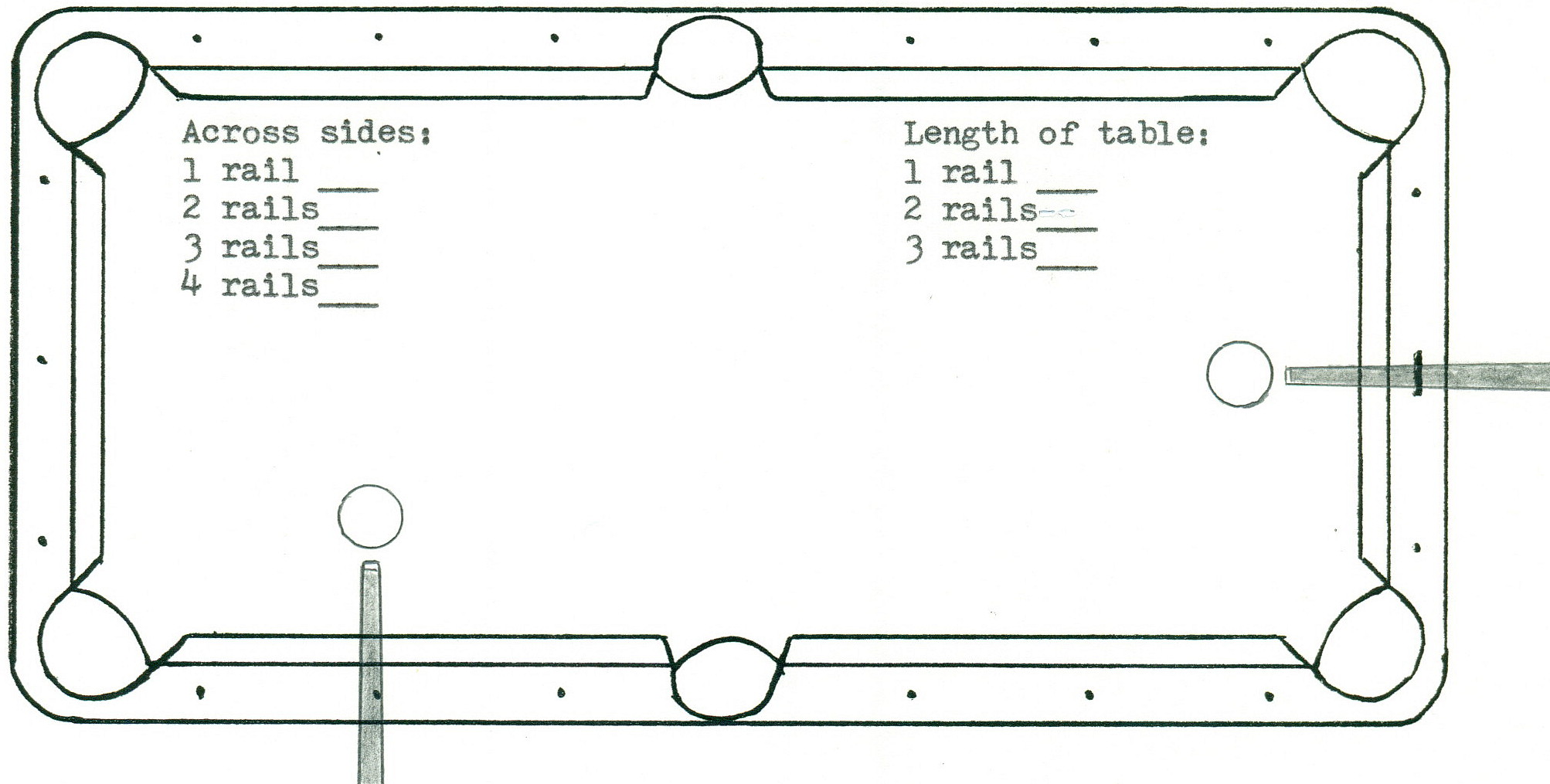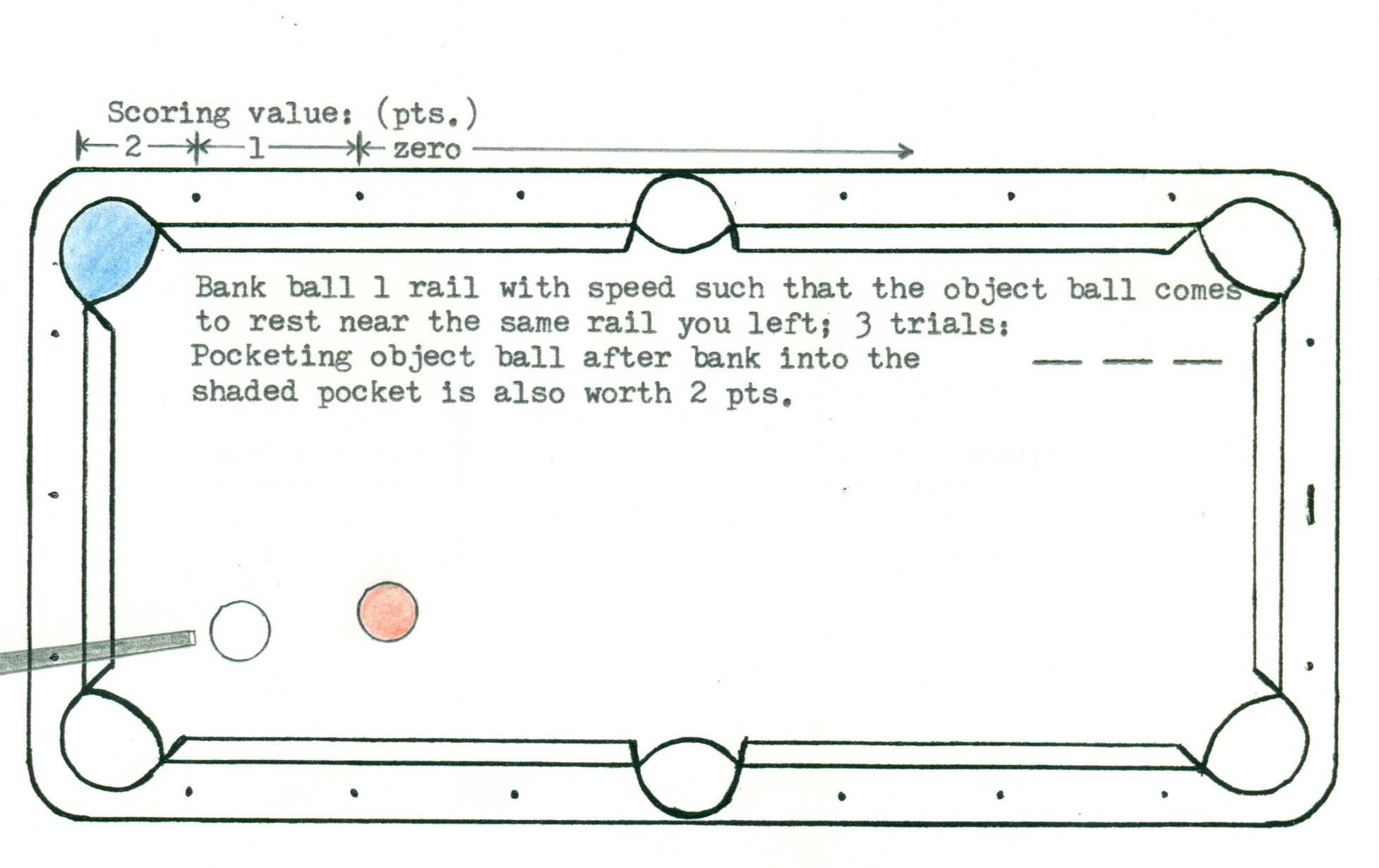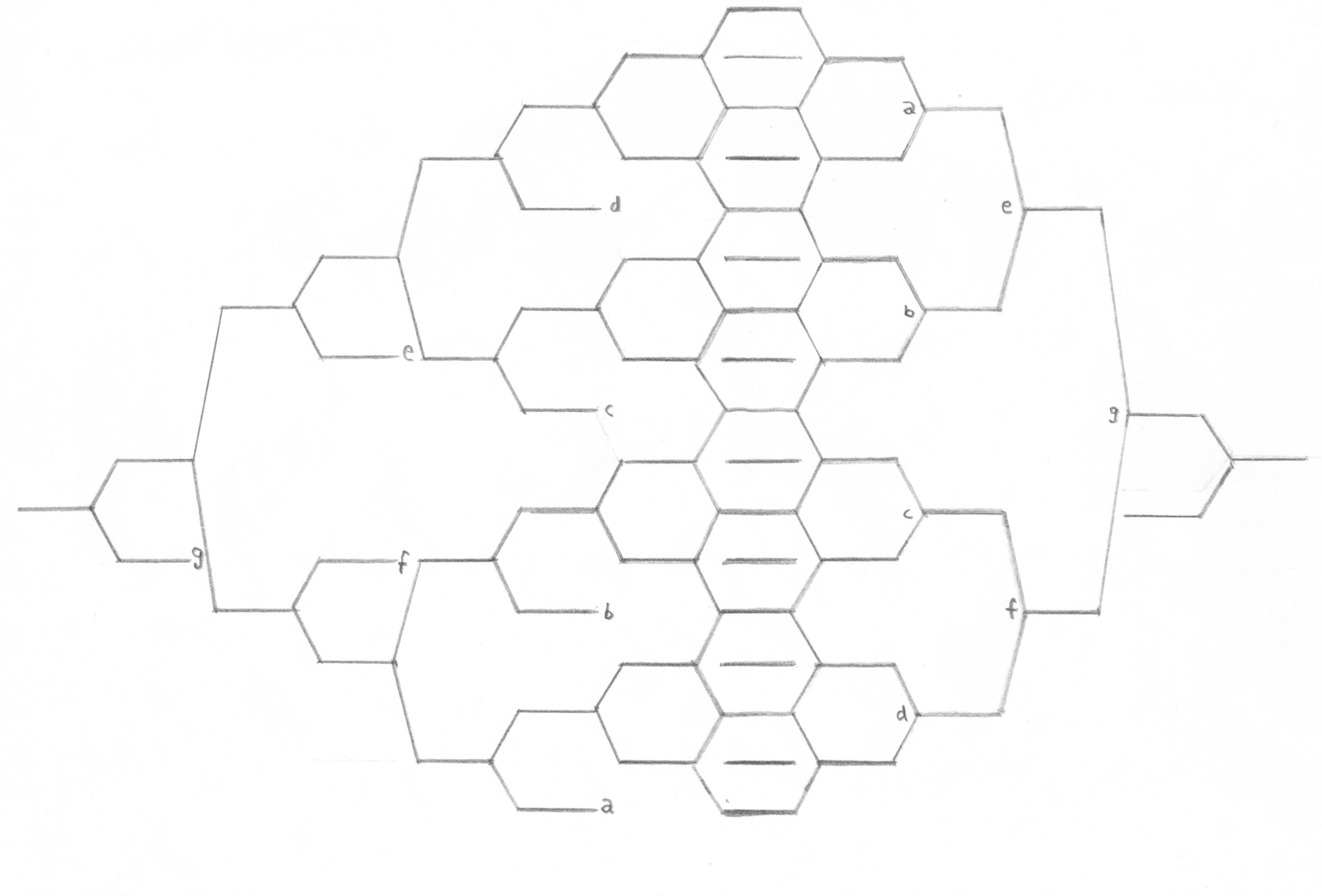Speed Skill Test & Double Elimination Chart Rod's Home
SPEED CONTROL SKILL TEST 1

Causing the cue ball to strike the correct number of rails is worth 2 points. Incorrect number of rails and/or scratch is worth zero points. The object is to strike one rail on the first stroke, 2 rails on the second stroke, etc. Across sides/table length. CAUTION: Top spin or shooting downward with a hard stroke will cause the cue ball to jump off the table. With low english and a hard stroke from side to side, "true speed" is defined as ending near the fifth rail. (up and down, the 4th rail). This shot is useful when you have a thin cut and must get back to that rail for position on the next shot. Maximum score is 20 points. You will find that in a humid environment, the balls will jump off the rails at a faster rate and the bed of the table will slow down somewhat but the latter is not as noticeable as the former. What you can do in a humid environment is an "inside-out" shot when you can't beat the "kiss" in a bank shot. Aim the bank away from the pocket about an inch or two with a hard stroke, the bank will shorten up and reverse course back toward your pocket off the third rail up and down and in. To make the latter, hit the cue ball at 4 or 8 O'clock, depending on what side of the table you are shooting. The compression of the rail also aids in executing this shot. Shooting same at 5 or 7 O'clock, the bank goes up and down two rails before going in the hole. This shot is exciting and also works for short rail banks.
SPEED CONTROL SKILL TEST 2

I met a nice fellow in Portland, OR who owned a bar with pool action. After I beat their best, the owner challenged me to a proposition game where he shot the cue ball up and down and resting near the rail from which he started (like pool players do when lagging for the break). I asked if the cue ball could hit more than one rail before approaching the end rail. He said that was OK so I shot the cue ball from the side diagonally to the end rail about 3 inches from the corner pocket and then spin to the side rail and back toward me then off the rail at an angle toward the end rail from which he started. Since I'm coming off the side rail at an angle, I have more room for error than he coming off the home rail perpendicularly. Of course I needed to lay down a solid stroke, and I usually did when playing 6 days per week. Also, I thought I learned a "hustle" from him when he said, "I want to play that guy over there; look at him; he doesn't use any chalk." I tried that technique later on hustling through Texas. I would never use any chalk so I had to hit the cue ball within one cue tip so I would not miscue. For position, I would "walk" the cue ball over the table but I still had a hard time finding any action.
DOUBLE ELIMINATION CHART

Top of Page 27 May 2013